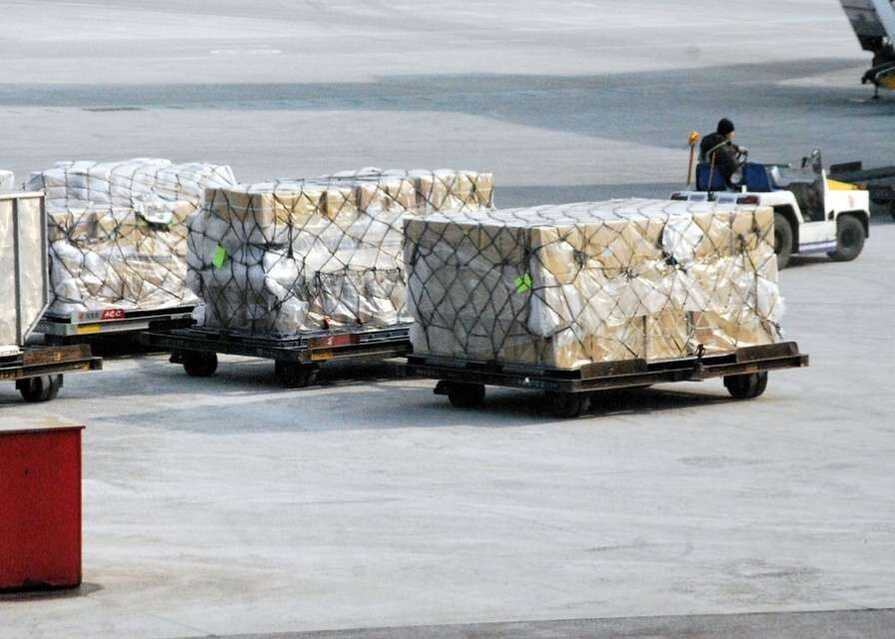Sending your goods across borders is a major challenge for shippers, and often a stressful one. How can you prepare your shipments to withstand the shock of transport? Here are the essential tips to prepare your exports and improve your delivery.

Provide secure export packaging
To ensure that your product reaches the recipient unharmed, you need to provide optimal, high-security packaging.
First of all, pay attention to the quality of the material: double flute boxes? triple flute?
Ask yourself the right questions:
- What is the destination country?
- What type of products are you shipping?
- What means of transport are you using – road, air or sea?

Choose a strong box, adapted to the climatic conditions of all the countries you will cross before arriving at the final destination (road or sea transport) and capable of supporting a pallet shipment, with stackable boxes for example.
Also make sure that your products are well wedged inside so that they move as little as possible during transport.
2 types of cushioning: cushioning against movement but also protective cushioning (e.g. bubble wrap)
Protecting your goods from weather conditions and theft
Your parcels may be at risk during export, due to weather conditions or malicious acts.
To keep your parcels safe from the elements, consider using :
- A humidity absorber;
- A temperature indicator;
- An anti-corrosion bag;
- A black stretch film to protect the pallets from UV rays.
To secure the parcel and prevent theft, you can use :
- Reinforced adhesive ;
- Gummed tape;
- Case sealing;
- Strapping of the boxes.
%20(1).jpg)
Optimal packaging for pallet transport
There are two scenarios..
- If you send individual parcels and do not make up your own pallets, you must ensure that they fit perfectly on the courier’s pallet. To do this, choose palletisable boxes (standardised dimensions) and check the quality to avoid crushing. Your parcels can also be protected by a palletising film during the intermediate transport and storage phases.
- If you make up your own pallets for a bulk shipment, you must ensure their safety and quality.
There are a few rules for pallet packing that must be observed.
1. Choosing the right pallet
Today, the most common type of pallet used in Europe is the Europe or “EUR EPAL” pallet, with standardised dimensions of 800 mm wide by 1,200 mm long. The size must be optimised according to the mode of transport: road, air or sea.
The material of the pallet helps to control shipping costs. Cardboard and moulded wooden pallets are lighter and therefore easier to handle.
They are exempt from treatment for export, unlike the heavier (but more versatile) wooden pallet, which requires an ISPM 15 certificate of compliance for export.
2. Choosing between container and pallet
In addition to being adaptable to the goods thanks to their modularity, containers have the enormous advantage of being able to be transported by sea, land or rail.
Plywood boxes and pallet boxes can carry up to one tonne of cargo and meet the international ISPM 15 standard, which aims to reduce the spread of pests from one continent to another (thus avoiding the need for fumigation or heat treatment in wood).
3. Putting together a pallet
The most important rule to follow for different sized cartons is that small, light cartons should be loaded on top, and large, heavy cartons should be loaded at the bottom of the pallet.
Stretch film, strapping or shrink film can be used to secure the pallet and its load.
Theprotection of the pallet can be improved by using corner protectors and spacer plates.
4. Secure the shipment of your pallet
Thanks to the palletising accessories:
- A cover to protect against weather and dirt;
- An opaque film to ensure the confidentiality of the shipment;
- An anti-jamming cone to avoid overlapping;
- Stabilising cushions to immobilise the pallets and protect them from shocks during transport.
Pay attention to labelling
Think ” legal ” when labelling: if the goods are damaged or deteriorated during transport, you can be reimbursed or receive a credit note from the carrier.
However, if your labels are missing or wrong, you may be held liable, so make sure you place the following labels on your pallets or packages, depending on the product:
- “Caution fragile”;
- “Dangerous”;
- “Do not return”, with even details of inclination to be respected;
- Give the identity card of your parcel (name, quantity, product, etc.).

Find out about the regulations for exporting goods
Your parcels or pallets are ready for export: it would be a shame to see them stuck in customs or refused because of regulations.
The European Union, for example, sets out specific labelling rules for certain products such as foodstuffs, alcohol, cigarettes, textiles, etc.
You can find out more from the Syndicat de l’emballage industriel or other specific websites.
Customs formalities (outside the EU) should also be taken into account: find out about the country of export to avoid unpleasant surprises, or leave this task to your carrier.
International transport companies are experienced in customs procedures and can even take care of customs clearance for your exports.
Quality export packaging is not a trivial matter, and by following these tips you will optimise your costs and ensure a damage-free shipment.
The international market opens its doors to you!
The 3 key points to remember :
- Choose your primary packaging carefully: double or triple fluted cardboard, easy to handle by the carrier.
- Think about your pallet shipment and choose a suitable format. Do not neglect palletising accessories such as the anti-spill cone to ensure the integrity of the pallet.
- Pay attention to the labelling of packages and find out about the regulations in force in the destination countries.















